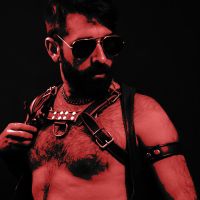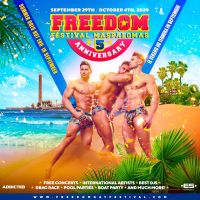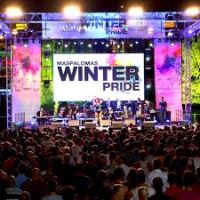The Canaries:
From Persecution to Liberation
During the 1960s and the early 1970s Spain saw the phenomenal rise of the sun & beach tourism, made possible by the first onset of cheap air travel and mainly originating from North European countries. The Canary Islands and in particular the Island of Gran Canaria were the perfect candidates for this huge transformation, with their mild climate, even in the middle of winter – perfect to lure northern visitors.
Yet Spain was also a somewhat controversial destination at the time: with the dictatorship of Francisco Franco in power until 1975, visiting the country was interpreted by many as an implicit nod to the fascist dictatorship, a rubber-stamping of its attempt to develop international tourism by presenting a soft and more benevolent image, something that was actively pursued by Franco to clean his international credentials.
a controversial destination during the Franco dictatorship
That partial laissez-faire extended even to the point of closing an eye on the timidly developing LGBT tourism, for instance in locations like Sitges or Torremolinos. Even the beaches of Gran Canaria started to receive LGBT visitors, though it must be remembered that the regime’s official stand towards LGBT people was less than friendly.
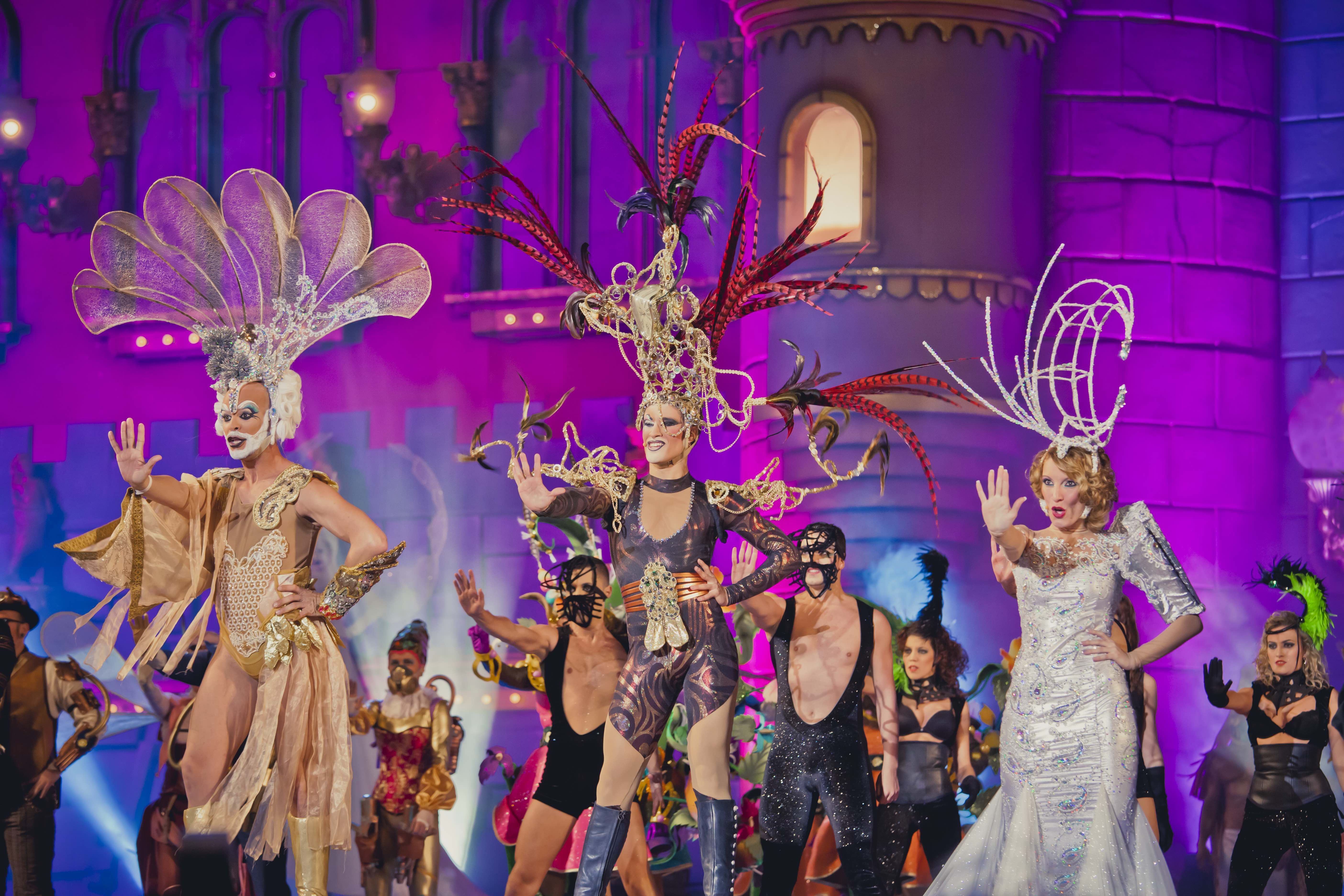
The truth is that compared to the rest of Spain, the Canary Islands have in the past been a relatively more benign place towards homosexuals. The distance from Madrid and the historically rooted diversity of the local population probably played a factor in this, however that didn’t avoid that on the Canarian island of Fuerteventura and until 1966.
The island was a concentration camp for male homosexuals, who were routinely interned here from 1954, following the revision of the Law of Vagrants and Criminals (Ley de Vagos y Maleantes) to include and persecute homosexuals. Gay men were imprisoned here for up to three years with the purpose of ‘re-education’ through hard labours, mostly in the stony fields around the island. Today, the grimy prison camp is a youth hostel. And yet the Canary Islands, due to their history have always been a relatively tolerant corner of Spain. Being for many centuries a regular stopover towards the South America and Western Africa, the islanders have always had a more open and more colourful approach to diversity.
the first gay bar opened in 1978
Therefore, with the end of the dictatorship and the return to democracy, Gran Canaria quickly started to develop an intense LGBT scene, but not in its capital city of Las Palmas but rather in the southern tip of the island, particularly in Maspalomas and Playa del Ingles. The causes for this were the relative remoteness from Las Palmas, coupled with the large expanse of beach and pristine wilderness – the famous Dunes and the long-standing international tourism vocation of this corner of the island (especially popular with British, German and Dutch visitors).
The first openly gay bar – called Jeans, opened its doors in Maspalomas in the year 1978 and was followed by several other venues, at first mainly concentrated in the Centro Comercial Nilo. It was not an entirely smooth start, as the police wasn’t entirely gay-friendly at the time, but in the end the tune changed.
The Yumbo Center was the game changer
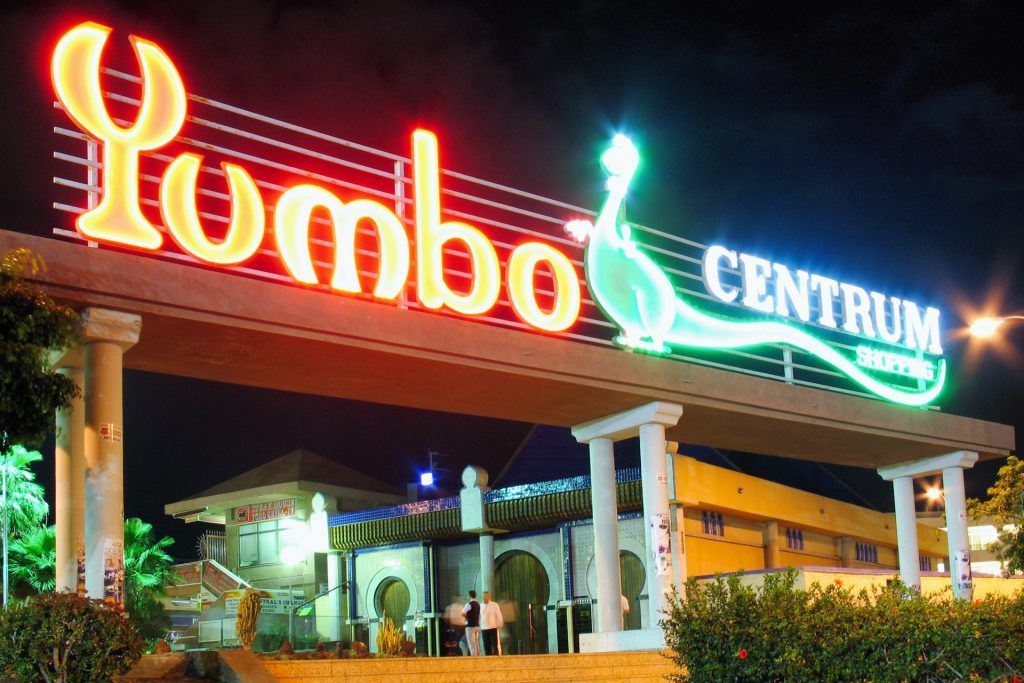
In 1982, the Yumbo Center opened its doors, and that was a game changer for LGBT tourism on the island. It aimed particularly at the gay community and of the more than 200 venues in the mall, many of them are gay bars, clubs, cabarets and sex-oriented venues.
This concentration of LGBT venues in one single defined area is probably unique in the world and that makes the Yumbo an incredible place to eat, drink and have fun, even if some people regard it as tacky and touristy.
Apart from the buzzing nightlife in Maspalomas, there are so many things to do on the island during the day.
Did you know...
The Dunes of Maspalomas extend over an area of 404 hectares (1,000 acres).
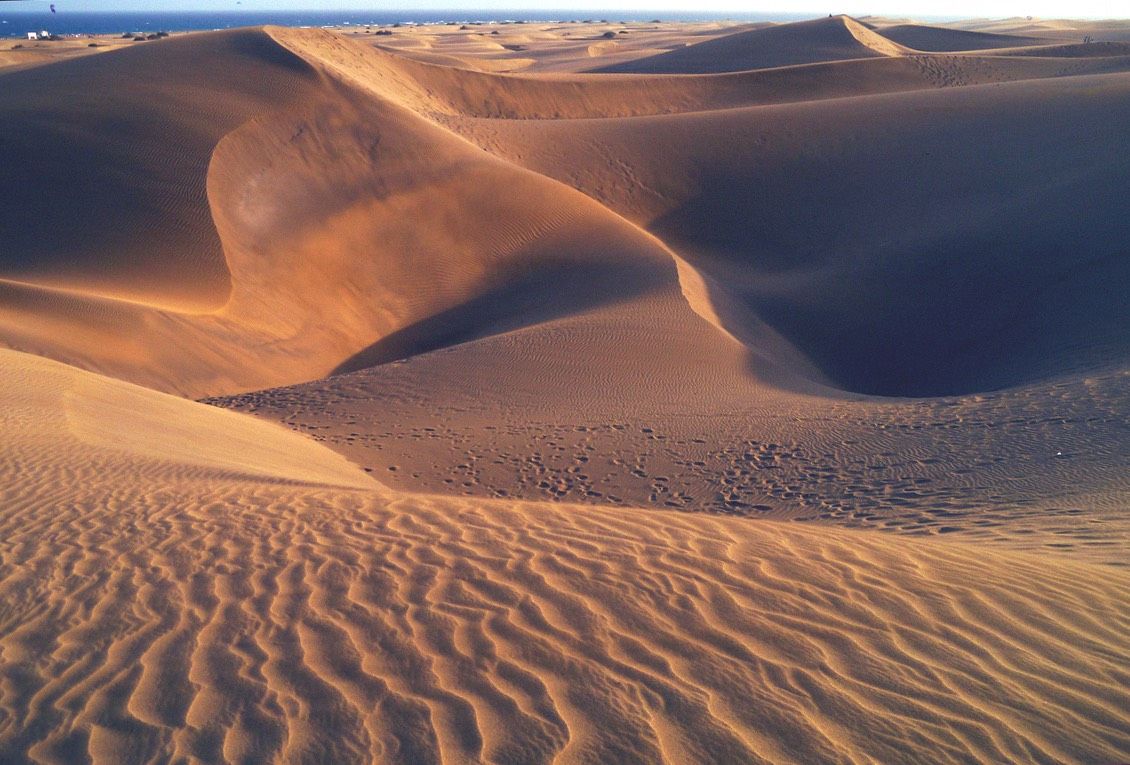

The Dunes of Maspalomas are well known all around the world as they are an incredible sight. Of course they are also one of the most famous (and large) cruising areas in Europe, though it must be pointed out that there are specific areas where the activity takes place, which means that if you are not into cruising, there is a lot of space to walk and explore undisturbed. However, if you are into cruising you will soon realise that the different areas of these vast expanse of sand and vegetation cater for specific preferences and times of the day, i.e. some attract mainly older while some others younger guys, some are the realm of straight & bisexual folks, and some others are for night-time activities, rather than day-time action. Wandering and discovering for yourself what the different areas are for is quite fun, if you are up for it.
the gay beach is a must see
At the southern tip of the dunes, around the chiringuito (kiosk) number 7 you will find the most famous and popular gay beach, which you can access either from the end of the main street at the Riu Hotel and through the dunes (which is what most people do, unsurprisingly), or along the coast from the imposing 56-metres tall Maspalomas lighthouse, which is another stunning viewpoint, especially at sunset.
Whilst there is an awful lot to keep occupied during your stay in Maspalomas & Playa del Ingles, it would be a pity not to explore the rest of the island.
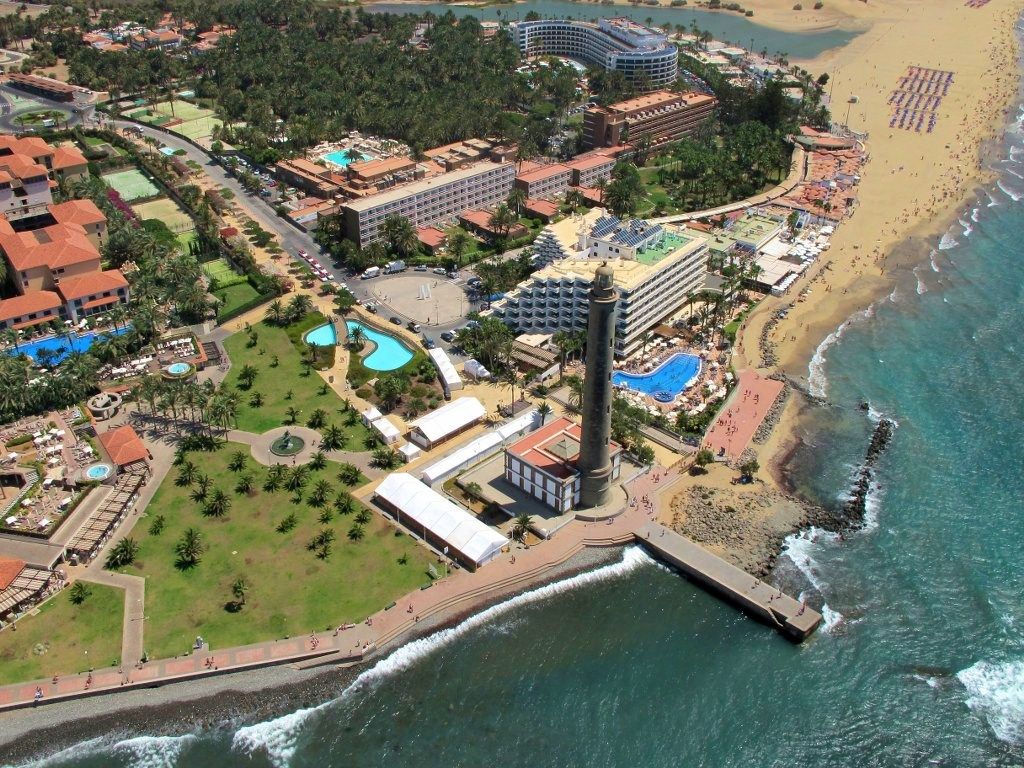
Las Palmas, the island’s capital, is a lovely place to explore, especially the Vegueta area, which is the oldest part of town, where some of the most important historical buildings have been standing for the past five hundred years. In particular, do pay a visit to Christopher Columbus’ House (Casa de Colón): the famous navigator stopped here in 1492 on his maiden voyage into the Atlantic to repair one of his three ships. In the beautiful historical building with its gorgeous courtyard, there is an interesting museum explaining the many historical and cultural links between Gran Canaria and the Americas.
Las Palmas has a small but vibrant LGBT scene as well, mostly around the Plaza de Farray and is perhaps a bit less touristy than the one found in Maspalomas. Almost along this LGBT hotspot is the beautiful and long Playa de las Canteras, which is the main city beach.
Apart from the gay beach in Maspalomas there also other LGBT-friendly beaches around the island, some clothing optional, like the Playa de la Montaña de Arena, just three or four kilometres to the West of Maspalomas.
Gran Canaria has a dramatic, fascinating and unspoilt interior
The Canary Islands all share a volcanic origin, with a geology that is still pretty much active. The imposing Mount Teide, on the island of Tenerife might be the most known volcano in the archipelago, but Gran Canaria also has plenty of dormant craters. The most spectacular is the Bandama Caldera, which is quite an impressive sight and yet very easy to reach by car. The more adventurous and fit can descend on foot into the caldera, otherwise there is an easy trail around the rim of the crater.
The more adventurous and fit can descend on foot into the caldera, otherwise there is an easy trail around the rim of the crater.
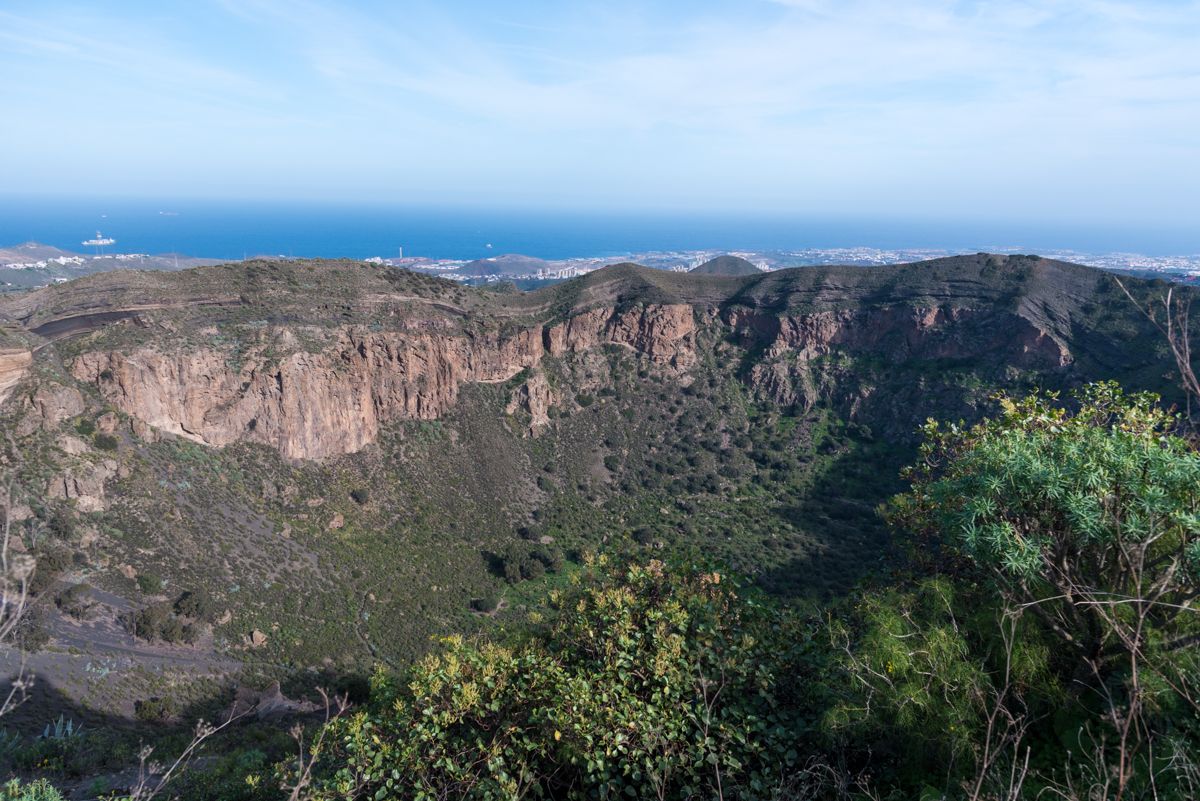
In fact the volcanic nature of Gran Canaria is fully on display for those who wander the wild and unspoilt interior of the island: the Roque Nublo, in the vicinity of the village of Tejeda, is considered one of the biggest natural crags in the world boasting a height of 80 metres and towering at 1,813 metres above sea level. The singularity and beauty of the rock formation made it a sacred place of worship for the ancient aboriginal people who lived here before the arrival of the Europeans.
Year Round Fun
There are so many events in Gran Canaria that stretch all year, so no matter when you visit, you will always find that there is something on.
Note: In 2020 because of the Covid-19 pandemic, many events have been cancelled or postponed, so hopefully in 2021 they will return to their usual schedule.


